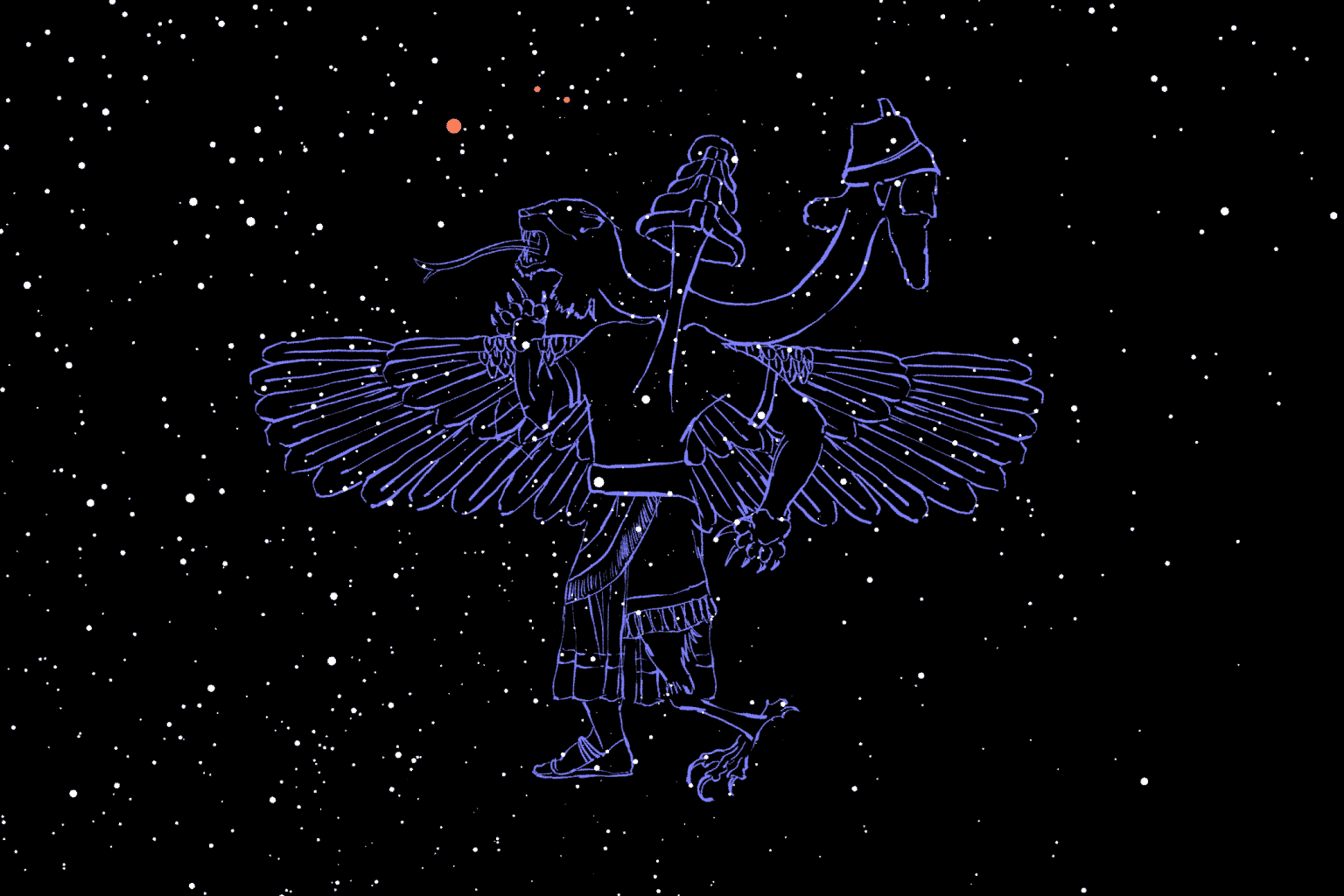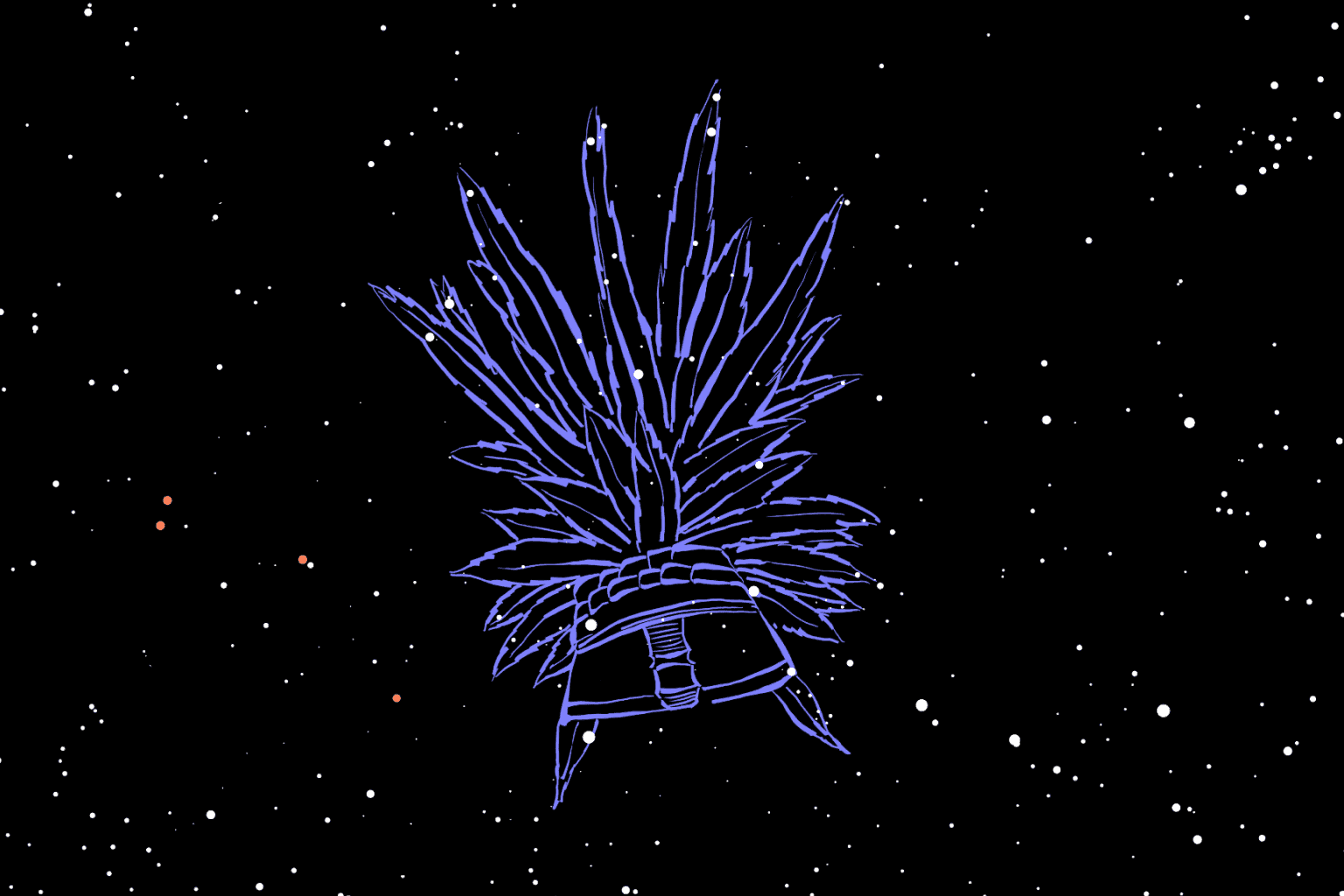Der König, der Allah töten wollte. (The King Who Wanted to Kill Allah. A story from the Arabian desert)
Joachim Gaertner
On the occasion of Sternenhimmel der Erde – Panoramen der Nacht, the 2nd STERNENHIMMEL Festival hosted by the Stiftung Kunst und Natur, the reading Arabian Nights / Arabische Nächte took place on October 17, 2022. It provides the starting point for this captivating film by Joachim Gaertner – a story of King Solomon, the birds and the winds, in search of the lost city.
Zum Mond! (To the moon!) After Edgar Allan Poe
Joachim Gaertner
On the occasion of Sternenhimmel der Erde – Panoramen der Nacht, the 2nd STERNENHIMMEL-Festival presented by the Stiftung Kunst und Natur, the reading (Mond)Geschichten aus Sternenlicht ((Moon)Stories of Starlight) was presented October 16, 2022, based among others on texts by Edgar Allan Poe (produced by: Michael Farin). With Lisa Bitter and David Zimmerschied.
The Mesopotamian Night Sky
Prof. Wayne Horowitz
Under the overall theme Cultural Astronomy today, Prof. Wayne Horowitz, Assyriologist at the Hebrew University of Jerusalem, gave a lecture on September 4, 2021 about The Mesopotamian Cosmic Geography. Recorded as part of the festival STERNENHIMMEL DER MENSCHHEIT.
The Stars and the Soul
Barbara Schellhammer
The third part of the interview with the cultural philosopher Barbara Schellhammer deals with the link between the star, the soul and the “Great Spirit”. Her conversation with her friend, Opaskwayak Cree Elder Stan Wilson, gives us an introduction to the spiritual firmament of his culture.
The Culture of the Inuit
Barbara Schellhammer
In the second part of the interview, Barbara Schellhammer talks about her experiences with the Canadian Inuit: memories caught between origins and a politics of assimilation. In addition, the cultural philosopher talks about the preservation of cultural heritage with reference to the STERNENHIMMEL project.
The Tuareg and their Stars
Malek Ben Malek
Tamanghasset/Algeria, June 2021: on the occasion of the Festival STERNENHIMMEL DER MENSCHHEIT in September 2021, journalist Malek Ben Malek talks to indigenous Tuareg sage Ibrahim Lamri about the stars of their culture – their names, their meanings and the stories they tell.
A Wolf runs in the Wrong Direction
Joachim Gaertner
“What does a constellation actually look like?” The documentary by Joachim Gaertner gives an insight into the work of the Munich graphic designer Heidi Sorg. As a visual archaeologist, together with Raoul Schrott and Christian Weiblen, she follows the sometimes almost invisible tracks in the stars of the night sky.
Cinema of the Night
Joachim Gaertner
From 2 to 5 September 2021, the first STERNENHIMMEL DER MENSCHHEIT Festival thrilled audiences with lectures, scenic readings, indigenous music and DJ sets. Under the celestial dome of Nantesbuch, scientists demonstrated their creativity and artists showed a spirit of experimentation. A film by Joachim Gaertner.
On the Hunt for the Reindeer
Joachim Gaertner
“Two singers – one duel”. In his documentary, Joachim Gaertner takes us from the ancient, but also fascinatingly modern, spiritual trance-like throat singing of the Inuit women to the panorama of heroes and ancestors in the Polar sky.
A Fallen Hero
Joachim Gaertner
“For us it all starts with the stars”, claims musician Ahmed Ag Kaedy. His group is called Amanar, like the most prominent constellation of his people’s night skies. Their “Desert Sound” at the Festival STERNENHIMMEL DER MENSCHHEIT 2021 inspired Joachim Gaertner to produce this film about the disappearing traces of the desert people.
Interview Kevin Govender, OAD
Kevin Govender
Astronomy for a better world: a virtual visit to Kevin Govender, Director of the OAD in South Africa. As part of the International Astronomical Union, it is concerned with the active promotion of social development through the inspirational power of astronomy. Watch here an excerpt from the video interview.
Philosophy as a Mediator
Barbara Schellhammer
In the first part of the interview with Barbara Schellhammer, the professor sheds light on her attempt to build intercultural bridges through philosophical dialogue. In addition, she takes a critical look at the European impulse to classify the “other” as part of the familiar.
Interpreter of the Stars
Joachim Gaertner
Infinitely large and mysterious: the writer Raoul Schrott sees in the night skies “the ceiling painting of the world”. For the first time his 'Atlas der Sternenhimmel' (Atlas of the Night Skies) will uncover the constellations and associated narratives and myths of 17 cultures from across of the world. A documentary by Joachim Gaertner.

























